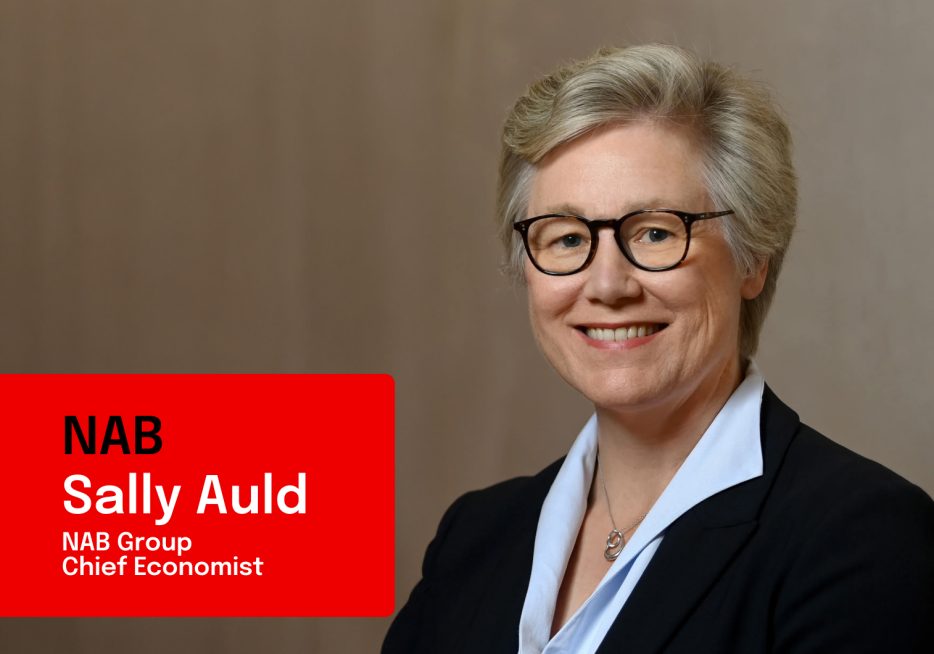We hear from NAB Group Chief Economist, as she shares her latest economic update. Watch now.


As economic and consumer dynamics change, Australia’s charities are looking for new ways to earn a buck. Andrew Loveridge, Head of Government, Education and Community Business, and Nicole Brasz, Marketing and Fundraising Director at Save the Children, discuss the brave new world of fundraising.

As economic and consumer dynamics change, Australia’s charities are looking for new ways to earn a buck. Andrew Loveridge, Head of Government, Education and Community Business, and Nicole Brasz, Marketing and Fundraising Director at Save the Children, discuss the brave new world of fundraising.
Times are certainly changing when it comes to charitable giving – and how Australian charities fund their ongoing missions.
With over 26,000 tax deductible charities in Australia – and thousands more without this status – charities represent around 9 percent of the Australian workforce. “The spectrum is very broad – from smaller, locally based organisations to huge Australia-based regional charities,” comments Andrew Loveridge, Head of Government, Education and Community Business at NAB.
One key thing they all have in common is that they’re essentially chasing the same dollar – but funding paradigms in Australia are changing in reaction to shifts in government policy and more short-term factors, such as consumer sentiment. Approximately 35 percent of funding across the sector currently comes from government – but that may be slowly changing. “Historically that has increased over time, but we’ve seen it peak and we see that declining marginally,” notes Loveridge. At the same time, giving growth rates are on the wane against a backdrop of slower wages growth.
According to the February NAB Charitable Giving Report, giving to charity grew by just 2 percent over the year to February 2015, down from 10% at the same time last year. The slowdown reflects below trend economic growth and rising unemployment, according to the report.
With both government and private support potentially declining, Australia’s charities are looking at new ways to diversify their income streams – some with great success. For some, a key focus has been locking in more certainty by developing their regular giving and workplace giving programs. Others have focused on creating ‘social product’, such as the Cancer Council’s sunscreen and other products, to help fund their ongoing missions. Peer to peer and digital channels are also being leveraged far harder in an effort to reach the widest possible audience.
What’s increasingly clear is that most organisations are recalibrating their funding.
Save the Children (STC), the world’s leading independent organisation for children, is certainly revolutionising its funding approach, comments Nicole Brasz, Director Marketing and Fundraising. STC is currently 78 percent funded by government; the balance of its funding comes from private sources including trusts, philanthropists, corporates and mass market
The organisation will experience a significant cut in government funding this year and into the future, following the A$1 billion cut in the international aid budget announced in the May 2015 Federal Budget. This adds a sense of urgency to STC’s already changing approach to private giving. “In the corporate space, we’ve shifted from a handout mentality to a ‘shared value’ approach, on the understanding that both sides get something out of the relationship,” notes Brasz. “We’re also moving beyond just monetary gifts, and leveraging other corporate resources; from skilled people, to using supply chains and value chains and other capabilities.” Recently for example, STC was able to use National Australia Bank’s retail outlets to collect donations for victims of the earthquake in Nepal.
But it’s in the mass market space where STC is really changing radically. When Brasz started with STC 18 months ago, the vast majority of mass market funds were acquired through face-to-face or street recruiting. “It’s a controversial channel but it does work in signing up a significant volume of supporters,” says Brasz. “However, it can have a high attrition rate.”
STC decided it wanted to diversify its mass market channels, so it launched two new acquisition channels to raise funds. It first piloted Direct Response TV (DRTV) and then focused on building in-house face-to-face teams, rather than outsourcing its street recruiting channel, to create more stability and longevity in the team and ultimately greater supporter engagement.
The charity has also invested in digital in a big way. “We’ve doubled our acquisition through digital channels year on year,” notes Brasz. STC has achieved this through a much bigger social media presence, through more powerful use of SEM tools, and by changing its product portfolio to make it more digital friendly. And there’s more to come. “We’ll be launching a digital game in June around sustainable development and investment in communities,” says Brasz.
STC is highly committed to maintaining this newly innovative edge. In early 2015 the organisation hired a Head of Market Growth to focus on innovative fund raising, particularly within the digital channel. “We’re also looking to grow our community fund raising programs, where consumers can raise money from their own friends and family on behalf of a cause,” say Brasz.
The traditional channels are by no means dead. Direct mail, face-to-face street marketing and telemarketing are still legitimate channels for STC. “But now we’re really using a far more qualitative rather than just quantitative approach,” explains Brasz.
Ultimately, all of Australian charities will need to ensure they’re tapping into new and emerging channels, as well as maintaining traditional channels and regular giving models to provide dependable income. “They can’t stand still, but they do need to maintain that fine balance,” says Loveridge.
If you’d like to know more about Save the Children please visit www.savethechildren.org.au
For more information, talk to your NAB Relationship Manager or email community@nab.com.au
More from NAB:
© National Australia Bank Limited. ABN 12 004 044 937 AFSL and Australian Credit Licence 230686.